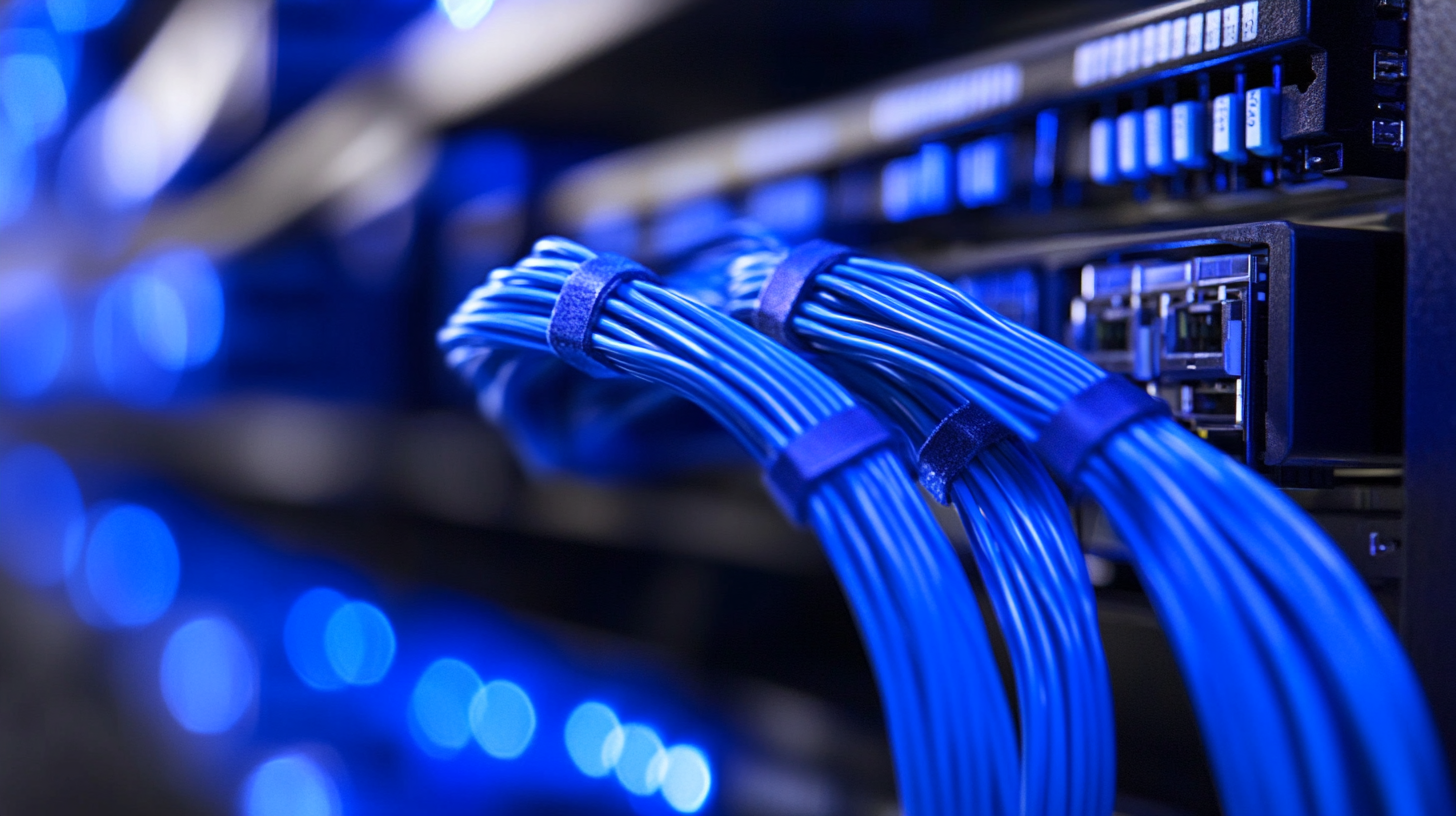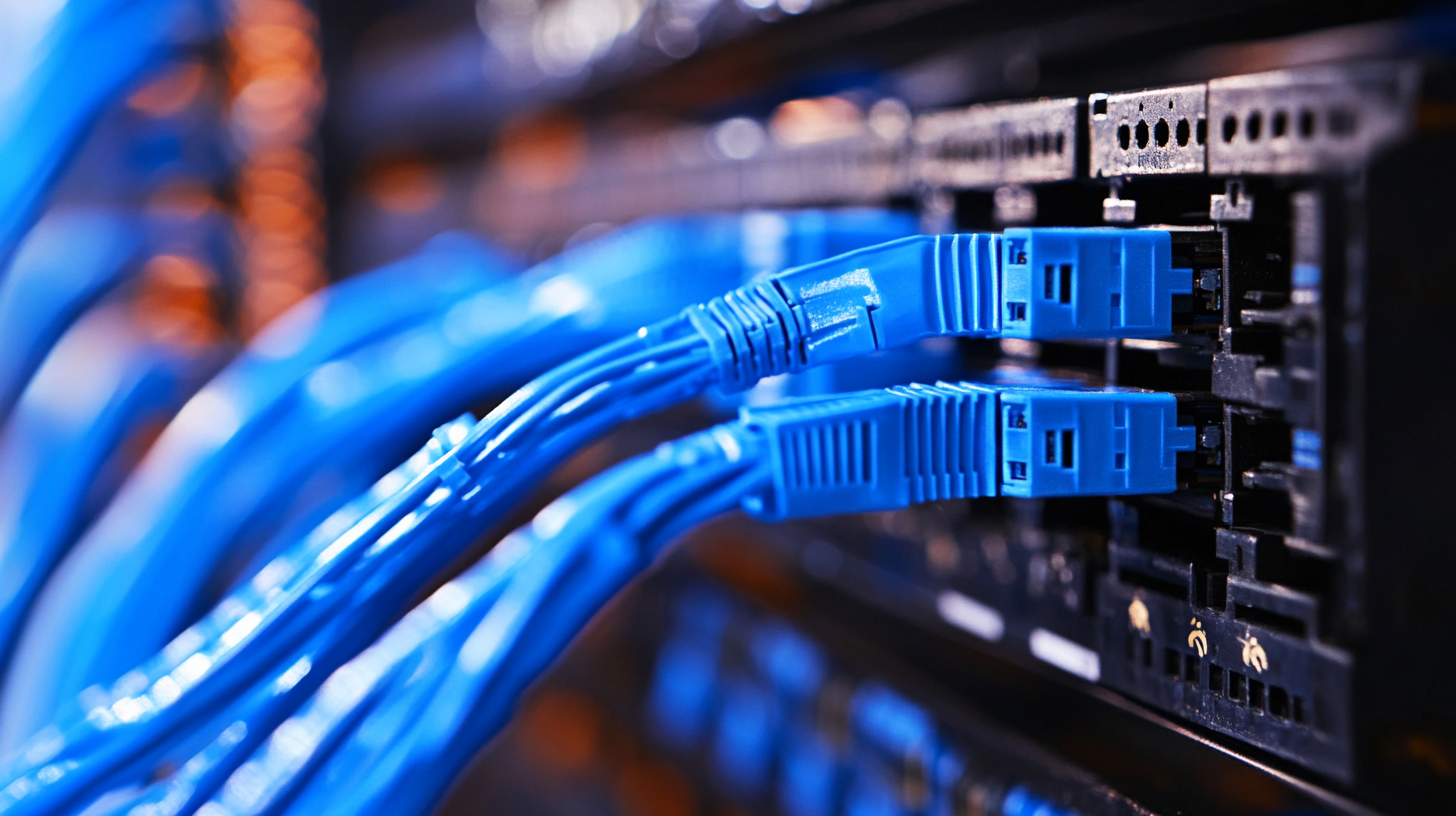Leave Your Message
In today's rapidly evolving networking landscape, the choice of connectivity solutions plays a pivotal role in achieving optimal network performance. As we approach 2025, industry reports indicate that data traffic is expected to surge by over 30% annually, driven by the proliferation of IoT devices and cloud computing applications. Within this context, Direct Attach Cables (DACs) have emerged as a cost-effective and efficient alternative to traditional optical fiber connections, crucial for meeting the demands of high-bandwidth applications. Studies highlight that DACs can provide a latency reduction of up to 50% compared to other cabling methods, while also significantly lowering power consumption. Selecting the right Direct Attach Cable is therefore essential for organizations looking to future-proof their networks and maximize performance as they navigate the challenges of increasing data volumes and the need for robust connectivity solutions.

When selecting the best direct attach cable (DAC) for optimal network performance, considering after-sales service can be a game-changer. After all, even the highest quality cables can occasionally encounter issues. A robust after-sales support system means that if problems arise, you have quick access to knowledgeable professionals who can assist, ensuring minimal downtime and disruption to your network.
Tips: Always check the warranty and support options provided by the manufacturer before making a purchase. A longer warranty often indicates the manufacturer's confidence in their product. Additionally, research user reviews to gauge the effectiveness of their after-sales service.
Another significant advantage of reliable after-sales service in DAC selection is the opportunity for regular updates and upgrades. Many manufacturers offer firmware updates that can enhance the performance or compatibility of their cables. This means you not only get a product that meets your current needs but one that can adapt over time as technology evolves.
Tips: Engage with customer service before your purchase. Their responsiveness can provide insight into how they'll handle your queries or concerns post-purchase. A company that values customer support will often foster a better overall experience.
| Cable Type | Length (meters) | Data Rate (Gbps) | Connector Type | After-Sales Support | Warranty Period (Years) |
|---|---|---|---|---|---|
| SFP+ Direct Attach | 1 | 10 | SFP+ | 24/7 Support | 3 |
| QSFP+ Direct Attach | 2 | 40 | QSFP+ | Email & Phone Support | 5 |
| DAC Cable | 3 | 25 | SFP+ | Online Chat Support | 2 |
| AOC Cable | 5 | 100 | SFP+ | Comprehensive Support | 4 |
When it comes to selecting the best direct attach cable (DAC) for your network, the focus often tends to be on speed and compatibility. However, maintenance costs play a crucial role in overall network performance, often overshadowed by the allure of cutting-edge technology. These costs include not just the price of initial equipment but also the expenses related to repairs, replacements, and downtime. A well-maintained DAC can lead to enhanced efficiency, reducing the frequency of failures and ensuring that your network operates smoothly at all times.
Investing in quality DACs may incur higher upfront costs, but these expenses can significantly decrease over time when considering the reduced maintenance and operational costs. Cheaper alternatives might save money initially, but their reliability can be questionable, leading to unexpected outages and higher long-term maintenance expenses. Overall, the selection of direct attach cables should factor in not only their performance metrics but also their potential impact on maintenance, ensuring that organizations choose options that foster both immediate and sustained network efficiency.
When it comes to enhancing network performance, selecting the right direct attach cable (DAC) is crucial. Each brand offers unique features and benefits, making it essential for users to conduct a comparative analysis. For instance, some brands provide cables with superior shielding and robust construction that reduce signal interference, while others may emphasize flexibility and ease of installation in high-density environments. Evaluating these characteristics can significantly influence the overall efficiency of your network setup.
Support is another vital aspect to consider when comparing DAC brands. Leading manufacturers typically offer comprehensive customer service and technical support, which can be invaluable during installation or troubleshooting. A brand that provides detailed documentation, warranty options, and responsive support can make a significant difference, especially for enterprise-level deployments where downtime can be costly. By weighing both the performance attributes of each brand and their support services, users can make an informed choice that ensures optimal network performance for their specific requirements.

When it comes to accelerating network performance, the choice of direct attach cables (DACs) plays a crucial role. Real-world implementations demonstrate that selecting the right DAC can significantly increase data transfer speeds while reducing latency. For instance, a study conducted by Cisco indicates that utilizing high-quality DACs can deliver up to 90% lower power consumption compared to traditional copper cables, particularly in data centers requiring extensive cabling for connectivity. This is particularly relevant as organizations strive to optimize energy efficiency without sacrificing performance.
Consider the example of a large e-commerce platform that adopted DACs to connect their servers and switches. By implementing high-performance DACs, they achieved a staggering 40% improvement in throughput during peak traffic periods. Furthermore, according to a report by Dell'Oro Group, markets for DACs are expected to grow at a compound annual growth rate (CAGR) of 20% over the next five years, driven by an increasing demand for high-speed data transfer in cloud environments. This trend reinforces the importance of selecting appropriate DAC solutions, as businesses look to scale operations while maintaining reliability and efficiency in their network setups.
When selecting network equipment, evaluating warranty and support features is crucial to ensuring long-term performance and reliability. A comprehensive warranty can safeguard your investment and minimize potential costs associated with hardware failures. It's important to consider not only the length of the warranty but also what it covers. Look for warranties that include support for both parts and labor, as well as any potential upgrades or replacements that may be necessary during the warranty period. Some manufacturers may also offer extended warranty options which can provide additional peace of mind.
Support features are equally vital in the decision-making process. A robust customer support system can significantly ease the burden on your IT department. Look for companies that provide multiple channels for support, including live chat, phone, and email. Additionally, prioritize those that offer extensive knowledge bases or community forums, as they can be invaluable resources for troubleshooting issues. Companies with proactive support representatives who can assist with regular maintenance or technical guidance often demonstrate a commitment to customer satisfaction that can benefit your operational efficiency.

